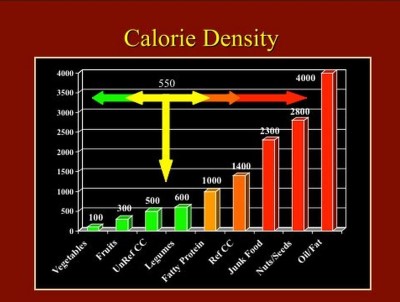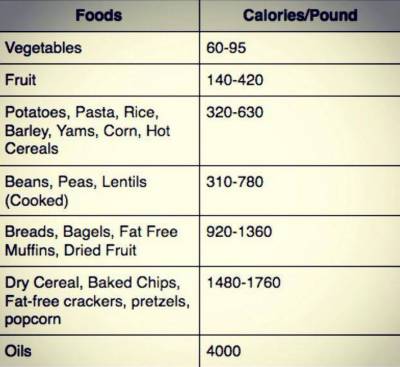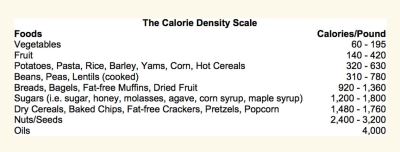DrCarney.com Blog
Calorie Density = Key to Weight Loss
One of the biggest advantages to eating a whole-food, nutrient-rich, Starch-Smart® diet is its simplicity for those desiring to lose extra weight. There's no calorie or carb counting, weighing portions, or relying on strong will power involved.
Weight loss takes place simply by eating whole, natural plant foods when we are hungry. A whole-food, Starch-Smart® diet consists of foods low in fat and calories, yet high in fiber, nutrients, and water-content. These foods stretch our stomachs and are very satiating. When referring to the calorie content in different foods, Jeff Novick likes to use the term, "Calorie Density." (This concept is also referred to on our web sites as the principle of "Concentrated Calories" or "Calorie Concentration.")
Watch Jeff Novick's Video Calorie Density Here:
Calorie Density describes a common sense dietary approach that not only ensures excellent nutrition, but also promotes lifelong weight management. When using this simple approach, we can increase the amount of food on our plates while the caloric content decreases. This optimizes the nutritional value of our meals, aids in satiety, and keeps us from having to go hungry. Counting calories, weighing and measuring portion size is not needed. Jeff Novick explains this concept by stating:
"Calorie density is simply a measure of how many calories are in a given weight of food, most often expressed as calories per pound. On a day-to-day basis, people generally eat a similar amount of food, by weight. Therefore, choosing foods with a lower calorie density allows us to consume our usual amount of food (or more) while reducing our caloric intake. Foods low in calorie density also tend to be higher in satiety so by consuming foods lower in calorie density, one can fill up on much fewer calories without having to go hungry and without having to weigh, measure or portion control our food. In addition, the foods that are lower in calorie density (fruits, veggies, starchy vegetables, intact whole grains and legumes) are also the foods highest in nutrient density. Therefore, by following a diet lower in calorie density, one also automatically consumes a diet higher in nutrient density."

Jeff Novick, MS, RD, LD, LN Links
Scroll Down Page to Leave Comments

Got Questions?
We would love to receive your questions. Join in the Starch-Smart Discussions on DrCarney.com by signing up for a free membership to the Dr. Carney Community.
When you subscribe to the blog, we will send you an e-mail when there are new updates on the site so you wouldn't miss them.





